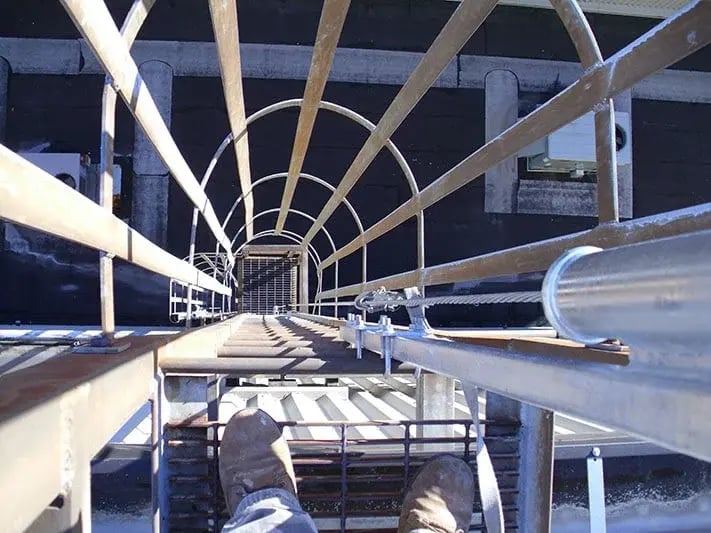Waste Management
Monitoring and controlling methane gas emissions are essential tasks required to keep your landfill operational, but ensuring the safety of your maintenance staff presents a number of safety challenges. Although often overlooked, providing safe access to your landfill pit requires a comprehensive fall prevention strategy, which includes the proper mix of fall protection equipment, a descent and rescue plan, personnel training, and partnering with a fall protection company that the unique nature of the waste management industry.
We are a complete turnkey provider of fall protection systems designed for the waste management industry and have the years of design and installation experience in the landfill market sector. Contact us for expert assistance with your fall arrest, fall restraint and fall protection requirements.

Fall Protection Solutions
Design Considerations
One of the main fall protection issues facing landfill operators is providing maintenance staff with safe access to the below ground pits containing the instrumentation, valves, pumps, and fans used to monitor and reduce methane gas emissions. As landfill pits can range in depths from 20-50 feet or more, the process of descent or ascent from the work area presents significant fall hazards. The leading edge of the pit also poses a potential fall hazard. Landfill fall protection systems must also facilitate rapid ascent, descent, and rescue in the event of a fall to minimize personnel exposure to methane gas.
Fall hazards posed by the leading edge of a landfill pit can be mitigated with the installation guardrail or single point anchors. Although a ladder system equipped with a vertical lifeline can be used to access the pit, a bosun chair used in combination with winch and davit system is often the best means to offer fall protection for maintenance personnel accessing the work areas below. A winch and davit system also provides the means to quickly and safely extract workers who succumb to the effects of methane gas.
Fall protection is also a consideration for the trucks servicing the waste management industry. OSHA fall protection regulations require the use of low profile track systems, cable systems, or single point anchors to protect maintenance personnel from falling off trash trucks during servicing or repair.
In addition to fabricating and installing a comprehensive fall protection system, DFP can instruct your staff in the proper use of PPE and rescue procedures to ensure your waste management facility is in compliance with all OSHA fall protection regulations. Diversified Fall Protection has years of experience installing OSHA compliant fall protection and fall arrest systems for the waste management market including:
Horizontal Lifelines
Vertical Lifelines
Single Point Anchors
Rigid Track Systems

b-1.jpg?width=1368&height=1340&name=Rail%20(175)b-1.jpg)


.webp?width=453&height=549&name=Confined%20Space%20and%20Rescue%20-%20In%20Applications%20(13).webp)

1.webp?width=500&height=380&name=HLL%20Overhead%20(661)1.webp)

